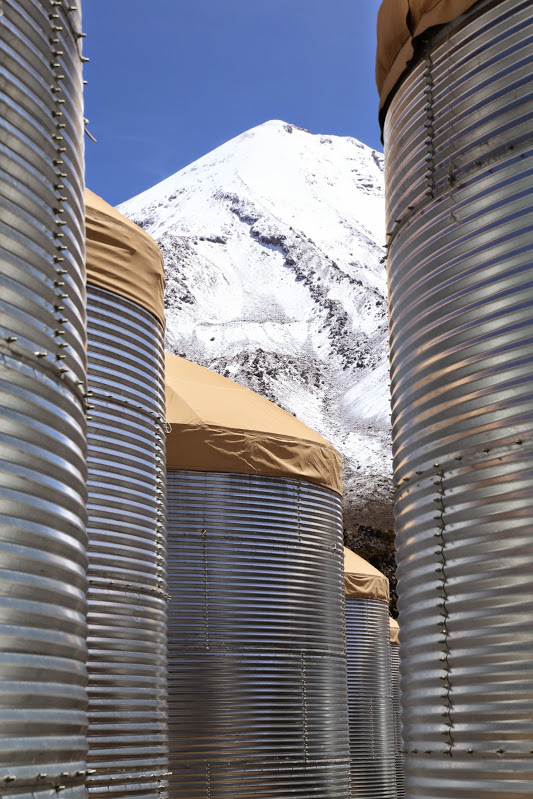HAWC Collaboration meeting in Puebla after the last summer of construction

Puebla is again seeing dozens of physicists wandering in their streets these days, as researchers from the High-Altitude Water Cherenkov (HAWC) Observatory get together for their biannual collaboration meeting. The Benemérita Universidad Autónoma de Puebla is hosting the meeting this fall, held from October 25 to October 29, in Mexico.
The HAWC Collaboration is facing the final countdown to the completion of the detector, expected by March 2015. HAWC construction started in 2011 on the slopes of Sierra Negra, at 4,100 m above sea level and about a two-hour drive from Puebla. Last May, a special water tank, number 250, was deployed. This would have been the last of the originally designed HAWC array, each tank 7.3 meters tall and 4.5 meters wide. However, during its construction, the project obtained additional resources for 50 extra tanks, in total covering about 20,000 square meters. The last tanks will be deployed in early 2015.

HAWC was built to map the northern sky in gamma rays with energies between around 100 GeV and 100 TeV, ultimately searching for the elusive sources of galactic and extragalactic cosmic rays. Construction has been an exciting time, with tanks deployed more or less year round.
After a tank is deployed, it has to be filled with water and have the electronics installed. “This can get tough during the wet season in the summer. But most of the tank and water crew are local to the site, they have grown up at high altitude,” says Mike DuVernois, a WIPAC researcher and a member of the HAWC Collaboration. “I guess it’s harder for those of us who come from the flat lands of Wisconsin,” adds DuVernois.
Each tank is erected on site. “We start with the top ring, push it up, and add additional rings below while raising the existing sections. Then a water- and light-tight liner is installed, which will be filled with purified water,” explains Zig Hampel-Arias, a graduate student at WIPAC and also a member of the HAWC Collaboration.
The liner comes to the site rolled up and is inflated with air inside the steel outer tank. Eight trucks per tank bring the water up the mountain from a well below, and the water is then processed through a filtration plant built at the HAWC site. “It’s always the same process, one tank after another, but I’m still thrilled when I see a new one fully deployed,” comments Hampel-Arias.

Data taking started as soon as the first tanks were tested back in early 2013. Since summer of 2013, HAWC has been taking data with more than 100 tanks. "The early data are used primarily to understand the detector and its performance and for fine-tuning the event reconstruction algorithms," says Stefan Westerhoff, the PI of the UW–Madison HAWC group. "However, we were also able to extract several science results from the early data; we observe gamma-ray sources along the galactic plane, and we have published a paper on several hot spots in the arrival direction distribution of cosmic rays in the northern sky, " adds Westerhoff.
TeV gamma rays from astrophysical sources are rare, as is the case for high-energy neutrinos. As detectors need a large effective area, they must be earthbound, and thus gamma rays will not be detected directly but through the secondary particles created by their interaction with the atmosphere.
The HAWC Observatory uses its huge water tanks to detect those secondary particles, which emit Cherenkov light as they move faster than the speed of light in water. The mechanism is the same as that used to detect neutrinos in IceCube, but using purified water instead of glacial ice. The light detected in each tank, which also provides timing information, will allow HAWC scientists to produce sky maps of the arrival direction distribution of the observed particles and identify sources in the sky.
Learn more about HAWC activities at WIPAC here, and also visit HAWC's main website (link).
